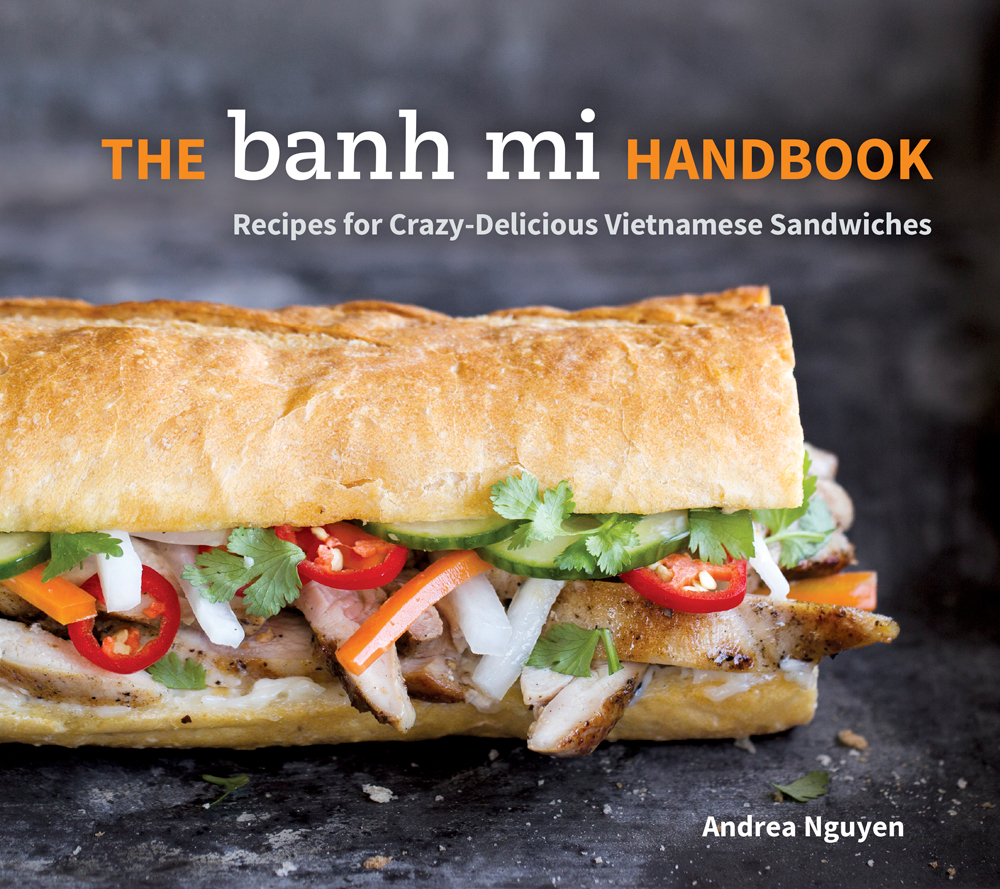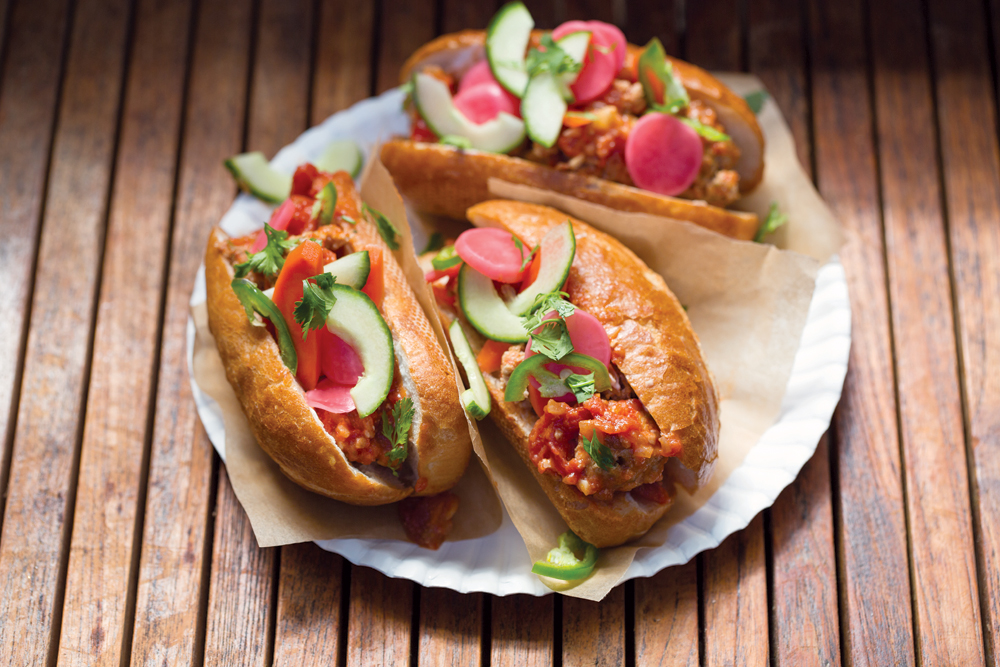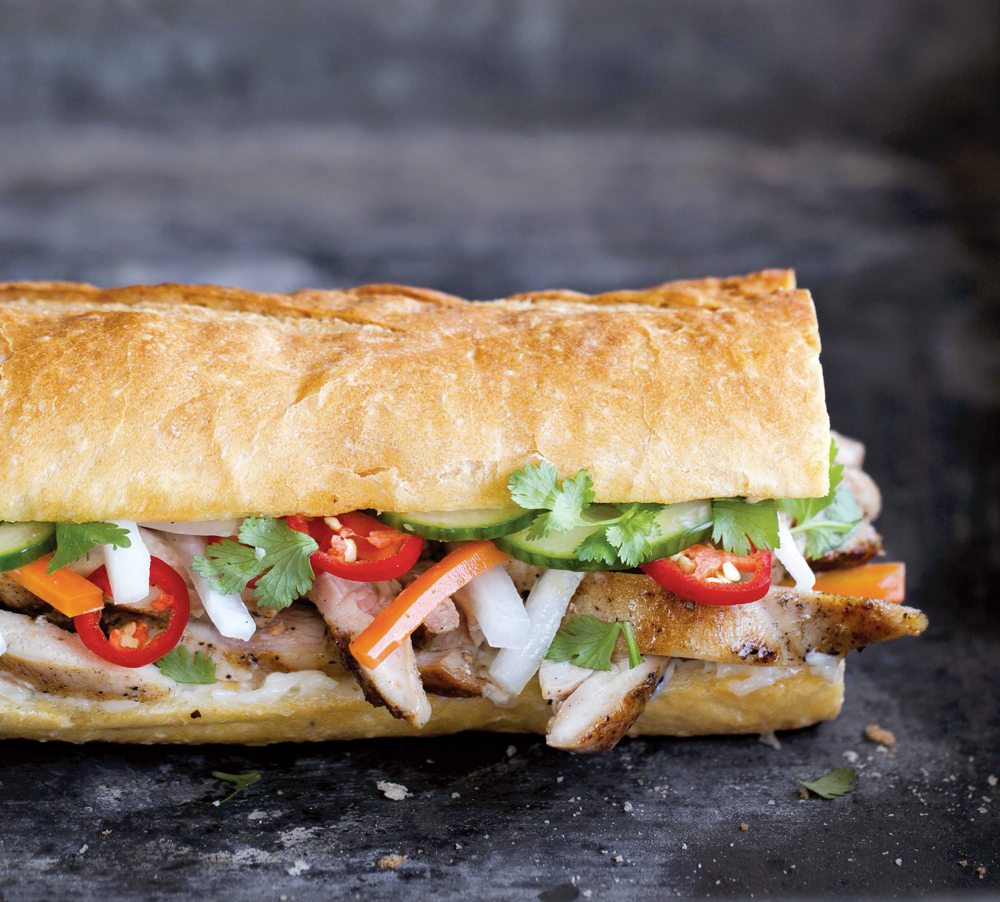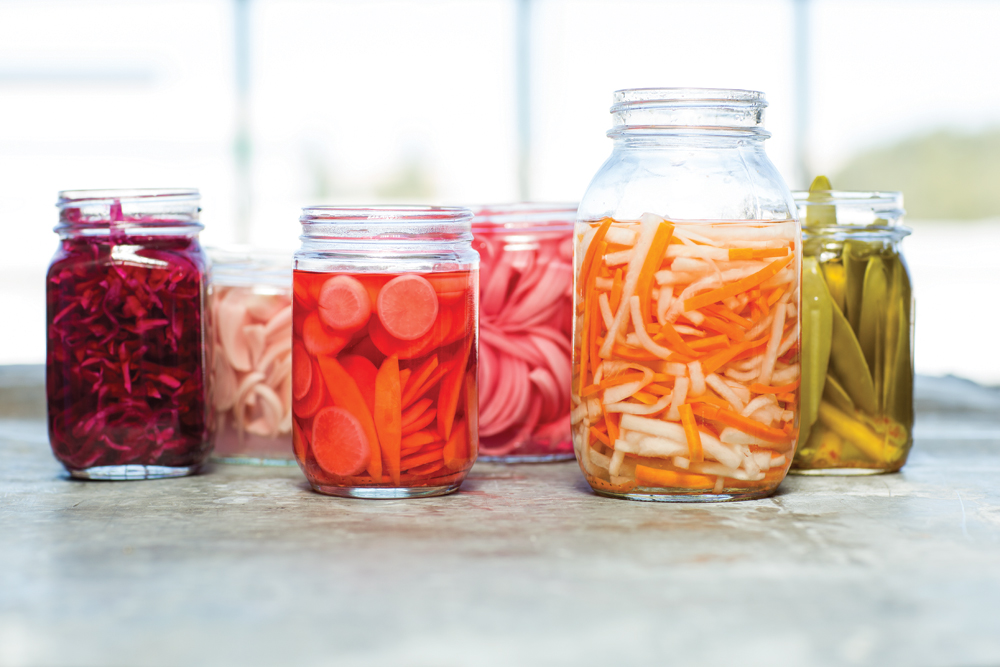
What's your favorite easy hand-held meal? If you've lived in the Bay Area for more than a week, it's probably the burrito. But increasingly, right behind it is the Vietnamese sandwich known as banh mi. Once found only in Vietnamese immigrant neighborhoods, the banh mi--which adapted French colonial ingredients to Southeast Asian tastes--has rapidly become a Bay Area staple. Vietnamese-owned delis like Saigon Sandwiches in the Tenderloin sell them; so do chic cafes like Bun Mee in Pacific Heights and the Castro. And now, local Asian-food expert and cookbook author Andrea Nguyen, who was airlifted out of Saigon with her family in 1975, has come out with The Banh Mi Handbook: Recipes for Crazy-Delicious Vietnamese Sandwiches, an informative, mouth-watering guide to making banh mi at home.

Nguyen is the author of several other cookbooks, including Asian Dumplings, Asian Tofu, and Into the Vietnamese Kitchen. Her writing style is brisk and lively, and she does an excellent job in explaining unfamiliar ingredients and laying out techniques step by step. An accomplished home cook with professional training, Nguyen's recipes are clear and detailed, without restaurant-chef jargon, and she has a friendly way of anticipating--and problem-solving--typical pitfalls for novice cooks. The book, cute and stylish, would make a great off-to-college or first-apartment gift, especially for someone who already loves these flavors and, sadly, might be relocating to a wilderness where these pickle-adorned, headcheese-stuffed baguettes are not standard-issue sandwich-shop fare. Served with rice or noodles, many of the recipes for grilled and braised meats could make for easy dinners at home, while the big-flavor spreads could muscle out the typical mayo n' mustard on any number of Western-style sandwiches.
In a short but informative first chapter, Nguyen explains the French colonial influence in Vietnam that led to the sandwich's creation, as well as the post-war diaspora of refugees fleeing Communist rule that spread the sandwich across the world. The French colonials brought baguettes to Vietnam, where they were known first as banh Tay (Western or French bread), then as banh mi (wheat bread). Writes Nguyen,
"My father's eighty-something-year-old friends recall that around the early 1940s, Saigon vendors started offering banh mi thi nguoi, an East-meets-West combination of cold cuts stuffed inside baguette with canned French butter or fresh mayonnaise, pickles, cucumber, cilantro, and chile. Reunification of North and South Vietnam via the communist takeover in 1975 resulted in a mass exodus of refugees, many of whom settled in North America, France, and Australia. Those who came from Saigon brought fond memories of Saigon-style sandwiches and yearned to savor them once more, and banh mi shops, bakeries, and delis sprung up in response."
Although the sandwich was born as a hybrid between French ingredients and Vietnamese tastes, Nguyen knows that a squirt of Sriracha and a handful of cilantro does not a banh mi make, and wisely, she resists the temptation to push her recipes into overloaded-hoagie territory. Although Nguyen's subtitle is "Recipes for Crazy-Delicious Vietnamese Sandwiches," she keeps the emphasis on delicious rather than crazy. You won't find a sandwich stuffed with mac and cheese here. Nguyen's recipes are creative and contemporary, and definitely more adventurous than what you'll find at your typical Vietnamese corner deli, but they don't stray into anything-goes territory. Instead, you'll find fillings like Hanoi Grilled Chicken, Sri Lankan Black Curry Chicken, Shrimp in Caramel Sauce, Chinese Barbecued Pork, Panko-Crusted Tilapia, and Garlic Pepper Pork Tenderloin. There are also eight vegetarian fillings, from Edamame Pate to Lemongrass Sriracha Tempeh and Thai Fried Omelet.

The book offers an in-depth, crash course in banh mi history, ingredients, and how-tos. There's a brief but helpful two-page guide to the "banh mi pantry," stocked with items ranging from fish sauce, soy sauce, and Swiss Maggi Seasoning to white vinegar (for pickling), Chinese five-spice powder, and mayonnaise. The following "Master Banh Mi" recipe lays out the typical components and amounts of the classic sandwich: vegetables (cucumbers, cilantro, fresh chiles, pickled daikon and carrots); filling; bread; mayonnaise or butter; and an umami-rich seasoning, such as Maggi Seasoning or soy sauce. This master recipe explains the simple steps, from lightly toasting the bread to layering the fillings, that go into making a delicious banh mi.

